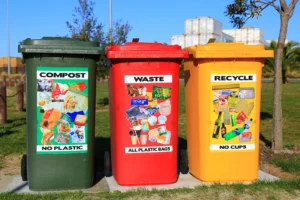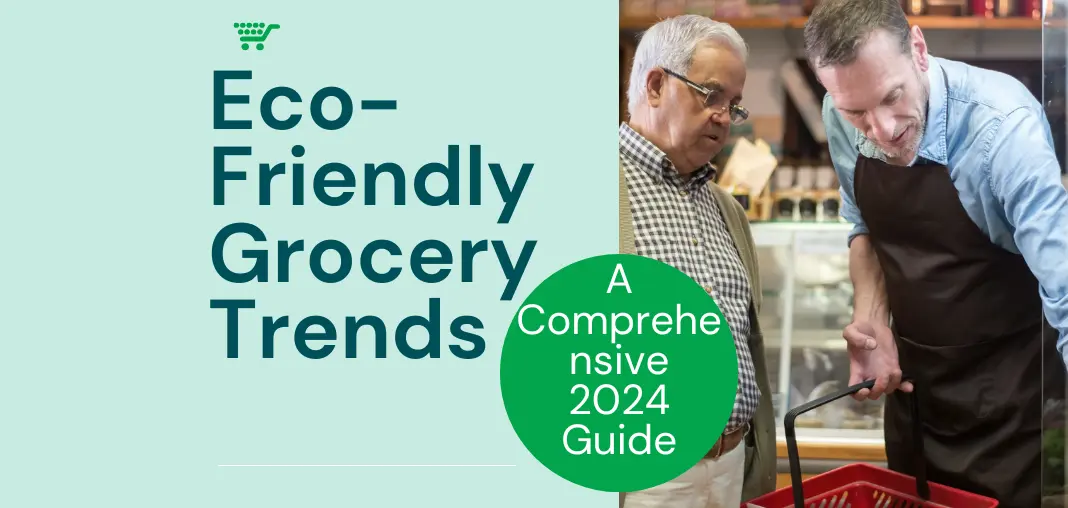With increasing awareness of environmental sustainability, people are reconsidering their grocery shopping habits. Today, shoppers are more informed than ever and demand choices that reflect their desire to protect the planet. From sustainable packaging to plant-based diets, eco-friendly grocery trends are on the rise in 2024. Here, we’ll take a closer look at these trends and learn how they’re changing the way we shop and eat.
Why Eco-Friendly Groceries Are Important
The impact of our shopping habits on the environment can’t be overstated. Every plastic bag, overpackaged item, or imported fruit comes with a carbon cost. By choosing eco-friendly groceries, we help reduce waste, limit greenhouse gas emissions, and support sustainable practices that benefit future generations. Sustainable grocery choices aren’t just good for the planet—they’re good for us, too.
1. Reusable Packaging and Zero Waste Initiatives
The Problem with Traditional Packaging
Plastic waste is one of the most pressing environmental problems. Millions of tons of plastic are produced every year, but only a fraction gets recycled. Most of it ends up in landfills or, worse, in our oceans. Traditional single-use packaging contributes heavily to this issue.
How Reusable Packaging Works
Reusable packaging is changing the game. Stores and brands are now offering packaging solutions that customers can return, refill, or reuse. This approach helps cut down on waste and supports a circular economy. For instance:
- Reusable Glass Jars: Many stores offer items like honey, peanut butter, and spices in glass jars that can be returned and refilled.
- Deposit Systems: Some brands have adopted deposit systems where you pay a small fee for the container, which is refunded when you return it.
- Bulk Bins and Refill Stations: More grocery stores now offer bulk sections where shoppers can bring their own containers and buy items like grains, beans, or nuts in the amount they need.

Benefits of Reusable Packaging
- Less Waste: Reduces single-use plastic waste.
- Cost-Effective: Helps customers save money by buying only what they need.
- Supports a Circular Economy: Encourages reuse and recycling, limiting resource extraction.
2. Plant-Based Foods: A Growing Movement
Why Go Plant-Based?
Plant-based eating has become more than just a diet trend; it’s now a major movement. The production of animal-based food requires vast amounts of water, land, and energy, and it contributes significantly to greenhouse gas emissions. Switching to plant-based diets helps reduce these environmental impacts.
Popular Plant-Based Options
The market for plant-based products has expanded dramatically. Here are some trending items:
- Plant-Based Milk: Options like oat milk, almond milk, and soy milk continue to grow in popularity.
- Meat Substitutes: Brands like Beyond Meat and Impossible Foods offer meat alternatives that taste just like the real thing but with a fraction of the environmental impact.
- Plant-Based Cheese and Yogurt: Dairy alternatives made from nuts, soy, and oats are now widely available and cater to those who want to reduce dairy consumption.
Benefits of Plant-Based Foods

- Reduced Carbon Footprint: Producing plant-based food typically emits fewer greenhouse gases than producing meat.
- Healthier Choices: Plant-based diets are associated with numerous health benefits, including lower risks of heart disease and diabetes.
- Less Resource-Intensive: Plant foods generally require less water and land to produce.
3. Local and Seasonal Produce: Farm to Table
Why Choose Local and Seasonal?
Local and seasonal produce is more than just a trend; it’s a return to sustainable food practices. By purchasing local and seasonal fruits and vegetables, you help cut down the carbon emissions associated with transporting food over long distances. Seasonal produce is often fresher, more nutritious, and supports local farmers.
Advantages of Local and Seasonal Shopping
- Reduced Food Miles: The closer the farm, the less fuel is used for transportation.
- Better Taste: Seasonal produce is harvested at its peak, making it tastier and more nutritious.
- Support for Local Farmers: Buying local helps sustain family-owned farms and boosts the local economy.
How to Shop Local and Seasonal

- Visit Farmers’ Markets: A great way to find fresh, seasonal produce and support local growers.
- Join a CSA Program: Community-Supported Agriculture (CSA) programs deliver fresh produce directly from the farm to your doorstep.
- Learn What’s in Season: Familiarize yourself with the growing seasons for different fruits and vegetables in your area.
4. Bulk Buying: Reducing Waste and Saving Money
The Benefits of Buying in Bulk
Buying in bulk isn’t just about stocking up on pantry staples; it’s a smart way to cut down on packaging waste and save money. More grocery stores are offering bulk options that allow customers to bring their own containers, fill them with exactly what they need, and avoid excess packaging.
What Can You Buy in Bulk?
- Dry Goods: Rice, beans, pasta, and grains are common bulk items.
- Nuts and Seeds: Almonds, sunflower seeds, and trail mixes.
- Spices and Herbs: Buy just the amount you need for a recipe.
- Household Products: Some stores offer bulk dish soap, laundry detergent, and more.
Tips for Successful Bulk Shopping
- Bring Reusable Containers: Make sure to clean and weigh them before use.
- Label Your Containers: Keep track of the tare weight to avoid confusion at checkout.
- Plan Ahead: Make a list of what you need to prevent overbuying.
5. Sustainable Seafood: Protecting Our Oceans
The Importance of Sustainable Seafood
Overfishing and unsustainable fishing practices have put immense pressure on marine ecosystems. Choosing sustainable seafood helps protect ocean biodiversity and ensures fish populations remain healthy.
How to Identify Sustainable Seafood
- Certifications to Look For: Labels like MSC (Marine Stewardship Council) and ASC (Aquaculture Stewardship Council) indicate that the seafood was sourced responsibly.
- Ask Your Fishmonger: Don’t hesitate to ask where the seafood comes from and whether it was caught or farmed sustainably.
Sustainable Seafood Choices

- Wild-Caught vs. Farmed: Not all farmed seafood is bad, and not all wild-caught seafood is good. Do your research to find which options are sustainable.
- Opt for Smaller Fish: Species like anchovies and sardines are more sustainable as they reproduce quickly and require fewer resources to catch.
How to Shop More Sustainably: A Quick Guide
- Bring Reusable Bags and Containers: Always have them on hand for impromptu grocery trips.
- Prioritize Recycled and Biodegradable Packaging: Support brands that use eco-friendly packaging.
- Limit Food Waste: Buy only what you need and make use of leftovers.
- Choose Organic When Possible: Organic farming avoids synthetic pesticides and promotes biodiversity.
- Support Eco-Conscious Brands: Look for brands that are transparent about their environmental impact.
Final Thoughts: Making Eco-Friendly Choices Easier
Transitioning to more eco-friendly grocery shopping might seem challenging at first, but small changes add up over time. By making conscious choices—like opting for reusable packaging, buying local, or choosing plant-based products—you’re contributing to a healthier planet and supporting a sustainable future.
Stay informed, be proactive, and remember that every little step counts.

